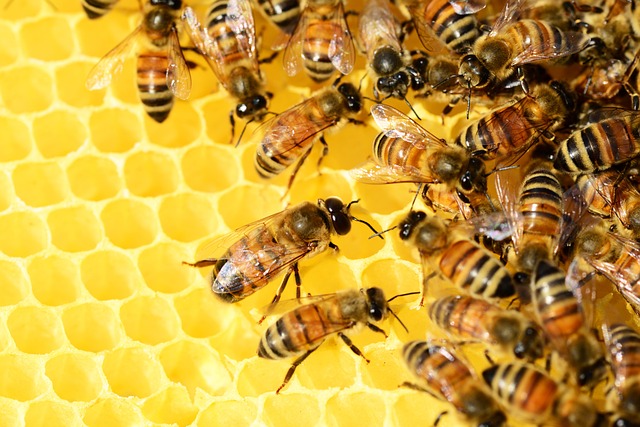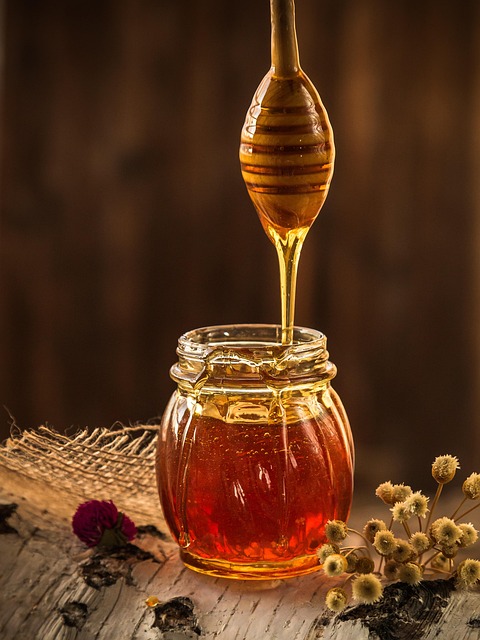
Introduction: Why Clover Honey Deserves a Place in Your Pantry
Clover honey isn’t just another sweetener it’s a natural treasure packed with flavor, nutrition, and versatility. Whether drizzled over warm toast, stirred into tea, or used in beauty routines, clover honey offers an array of benefits that extend beyond the kitchen. Revered for its light, mild taste and gentle floral aroma, this honey variety has become a household staple for health-conscious individuals, gourmet chefs, and skincare enthusiasts alike.
What sets clover honey apart is its subtle yet distinctive flavor, rooted in the blossoms of clover plants and shaped by the bees that craft it. In this deep dive into the world of clover honey, we’ll explore its fascinating origins, remarkable flavor profile, nutritional perks, culinary uses, skincare magic, and even its environmental significance. Let’s unlock the golden goodness of clover honey!
The Origins of Clover Honey
The Role of Clover Plants in Honey Production
It is created when bees pollinate clover plants—members of the Trifolium genus. These herbaceous plants, known for their small, globe-shaped blooms, are rich in nectar, making them highly attractive to honeybees. When bees visit clover flowers to collect nectar, they inadvertently transfer pollen, contributing to plant reproduction while creating this prized honey variety.
Geographical Regions Known for Clover Honey
Clover grows widely across temperate regions, making it especially common in North America, particularly in the United States and Canada. States like Montana, North Dakota, and South Dakota are renowned for their large-scale clover honey production. In these areas, vast fields of white and red clover support thriving bee populations.
Environmental Conditions and Bee Foraging Habits

The production of clover honey depends heavily on environmental factors such as soil quality, rainfall, temperature, and biodiversity. Bees prefer to forage in areas where clover is abundant and uncontaminated by pesticides. Sustainable land management and climate consistency also play crucial roles in ensuring a steady supply of high-quality clover honey year after year.
Flavor Profile of Clover Honey
The Taste and Aroma of Clover Honey
It is cherished for its light, mild sweetness and delicate floral undertones. Unlike darker honeys with intense or earthy notes, it offers a clean, pleasant flavor that appeals to a wide range of palates. It’s often described as buttery, vanilla-like, or slightly fruity perfect for enhancing food without overpowering it.
Nuances Based on Clover Species
There are multiple species of clover—white clover, red clover, and alsike clover among them—each contributing subtle variations to the honey’s flavor. White it is the most common and tends to be the sweetest and lightest. Red clover may lend slightly more floral depth, while alsike it might have a touch of spice.
Influence on Color, Viscosity, and Crystallization
It is typically light amber to golden in color, although this can vary depending on the specific clover source and harvesting conditions. Its consistency is moderately thick, and like most raw honeys, it tends to crystallize over time. Crystallization is a natural process and doesn’t affect the honey’s quality—in fact, it can indicate purity.
Nutritional Benefits of Clover Honey
A Natural Source of Vital Nutrients
Clover honey isn’t just about taste it offers real nutritional value. It contains a blend of vitamins (like B6 and niacin), minerals (such as calcium, iron, magnesium, and potassium), and powerful antioxidants, including flavonoids and phenolic acids. These compounds help support immune function and overall wellness.
Health Benefits Backed by Nature
Some of the key health benefits of clover honey include:
- Antioxidant protection: Helps fight oxidative stress and cellular damage.
- Soothing sore throats: Its smooth texture and antimicrobial properties make it a go-to remedy for coughs and sore throats.
- Digestive support: It can help balance gut bacteria and soothe digestive discomfort.
- Wound healing: Thanks to its natural antibacterial qualities, it has been used in traditional medicine for skin healing.
Clover Honey vs. Other Honey Varieties
Compared to darker varieties like buckwheat or manuka honey, it is lower in intensity but still rich in nutrients. While manuka may offer stronger antibacterial effects, it is more versatile, affordable, and palatable for daily use.
Culinary Uses of Clover Honey
A Kitchen Staple for Sweet and Savory Dishes
Clover honey’s balanced flavor makes it a beloved ingredient in countless recipes. Whether you’re baking muffins, glazing meats, or whipping up salad dressings, clover honey adds a touch of natural sweetness and complexity.
Recipe Ideas Featuring Clover Honey
- Clover Honey-Glazed Carrots: Roast baby carrots with olive oil, salt, and a generous drizzle of it for a sweet-savory side dish.
- Honey-Lemon Chicken: Combine it with lemon juice, garlic, and thyme for a zesty marinade or glaze.
- Homemade Granola: Use it to bind oats, nuts, and dried fruit for a crunchy, nutritious snack.
- Baked Brie with Clover Honey and Almonds: Top warm brie with honey and toasted almonds for a crowd-pleasing appetizer.
Natural Sweetener Swaps
Replace processed sugars with it in everything from oatmeal to smoothies. It blends easily, enhances flavor, and contributes additional nutrients—not empty calories.
Clover Honey in Beverages
Perfect Pairings for Hot and Cold Drinks
It shines in beverages, adding natural sweetness without overwhelming other flavors. Its mild taste blends seamlessly with a variety of drinks, from morning tea to evening cocktails.
Tea, Coffee, and Beyond
- In Tea: Add it to green or herbal teas for a soothing experience.
- In Coffee: Mix into black coffee or cold brew for a mellow sweetness.
- In Cocktails: Combine with lemon, bourbon, and ginger for a clover honey whiskey sour, or mix into mojitos and sangrias for a floral twist.
Tips for Mixing with Liquids
When using this in cold beverages, dissolve it first in a bit of warm water to ensure even distribution. For hot drinks, stir it in after brewing to preserve its nutrients.
Clover Honey and Skin Care
Skin-Nourishing Properties of Clover Honey
It isn’t just for eating it’s also a powerful ally for your skin. Thanks to its natural humectant properties, it draws moisture into the skin, making it an excellent ingredient for hydration and healing.
Beauty and Personal Care Applications
It is often included in:
- Face masks: For deep moisturizing and soothing inflammation.
- Lip balms: To heal dry, cracked lips.
- Soaps and cleansers: For gentle cleansing and antibacterial protection.
DIY Skincare Recipes
- Hydrating Face Mask: Mix 1 tablespoon of clover honey with 1 tablespoon of plain yogurt and apply to clean skin. Rinse after 15 minutes.
- Exfoliating Scrub: Combine clover honey with brown sugar and a touch of olive oil for a natural exfoliator.
- Spot Treatment: Dab a small amount directly onto blemishes to help reduce redness and swelling overnight.
Clover Honey and the Environment
Supporting Pollinators Through Clover Cultivation
Clover fields are not only beautiful but essential to pollinator health. They provide a rich source of nectar for bees and other pollinators, contributing to biodiversity and ecological balance.
Sustainable Beekeeping Practices
Ethical beekeepers prioritize the health of their hives and avoid practices that stress bees or damage ecosystems. Choosing it from sustainable sources helps protect bees and promotes environmentally responsible agriculture.
Eco-Friendly Sweetener Choice
Clover honey, when responsibly harvested, has a lower environmental footprint than refined sugars and synthetic sweeteners. Its production supports both human health and the planet.
Buying and Storing Clover Honey
How to Choose Quality Clover Honey
Look for:
- Raw or unfiltered honey to retain enzymes and nutrients.
- Local sourcing to support nearby beekeepers and reduce carbon footprint.
- Clear labeling that indicates botanical source and production method.
Proper Storage Techniques
Store it in a tightly sealed glass jar in a cool, dark place. Avoid refrigeration, which can accelerate crystallization. If it crystallizes, gently warm the jar in a bowl of hot (not boiling) water.
Managing Crystallization
Crystallization is natural and reversible. To return honey to liquid form:
- Place the sealed jar in warm water.
- Stir occasionally until smooth.
- Avoid using a microwave, which can destroy enzymes and flavor.
Conclusion: Embracing the Sweet Simplicity of Clover Honey
It stands out as a delicious, nutritious, and versatile gift from nature. From its mild floral flavor to its countless health and culinary applications, this golden nectar is more than just a sweet treatit’s a lifestyle enhancer. By choosing it, you’re not only nourishing your body but also supporting sustainable agriculture and pollinator health.
So the next time you’re reaching for a sweetener, consider making the switch to clover honey. Whether it’s in your breakfast bowl, beauty routine, or evening cocktail, the possibilities are as endless as the fields of blooming clover.
